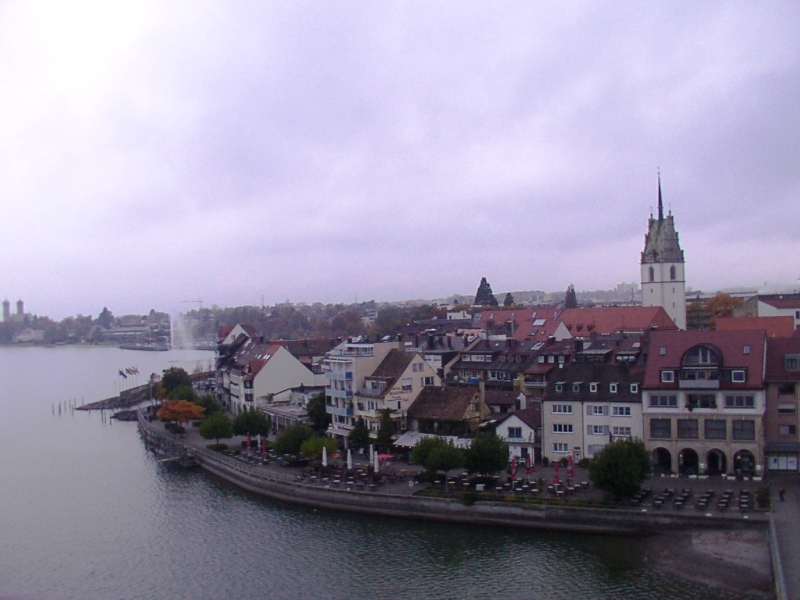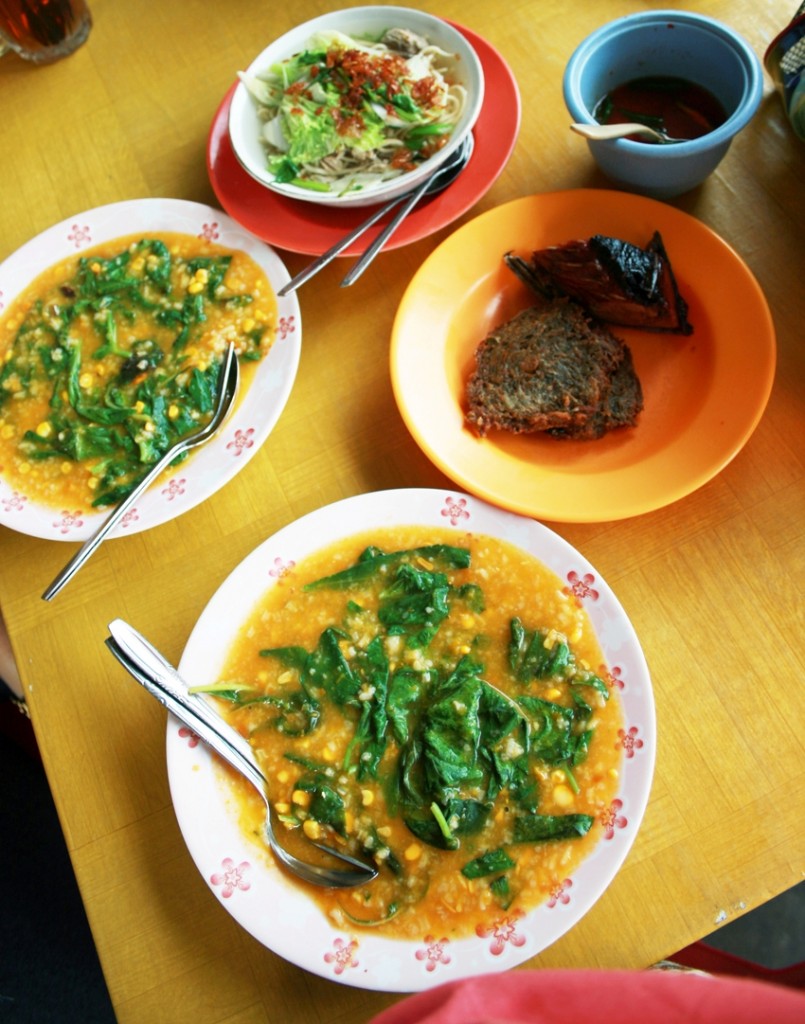Ali: Khorramabad, Iran (Part 3)
When I woke up in the morning, the family was ready to prepare for the trip. I was excited. Elham and his brother arranged the logistic needs. The drive from Khorramabad in Lorestan Province to Susa in Khuzestan Province was expected to take around four hours. And we were going to leave at 8 am after having breakfast. This time Ali’s father was going to drive all the way to Susa, whose aerial distance from Khorramabad is about 144 kilometers.
Except Mahza everyone in the family joined the trip. The drive was easy and fun. Now I could clearly notice the landscape of Khorramabad. The city was surrounded by hills and mountains, which were vast and green. We drove through the highway and passed some tunnels. Ali’s father drove at the full speed.
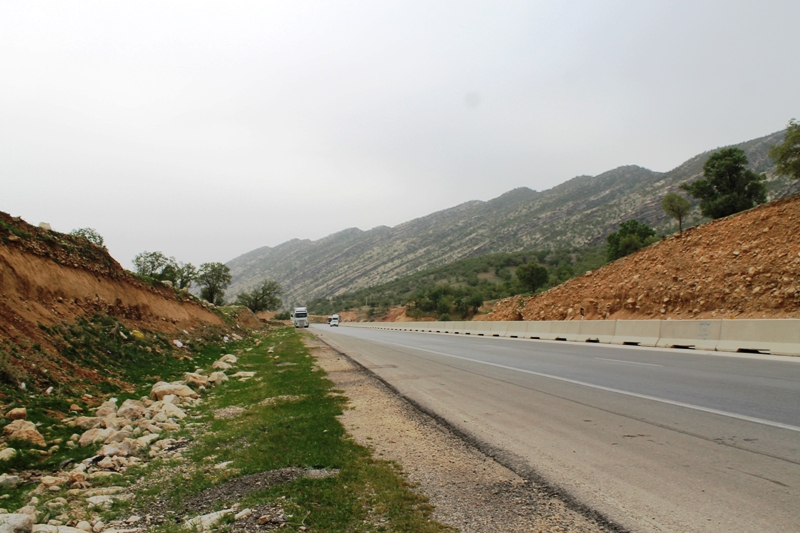
After about two hours driving, we entered Khuzestan Province in southwest Iran and the landscape on both sides of the highway drastically changed. There were no more green hills, only dry rocky hills. When we slightly opened the car windows, I abruptly feel the hot air coming in. It was May and I could not imagine how the weather would be on summer time.
However as we were approaching Susa, I saw the green again. We stopped for a while by the side of the road for a rest. It was not a busy but active road. Our destination was about half-hour away.
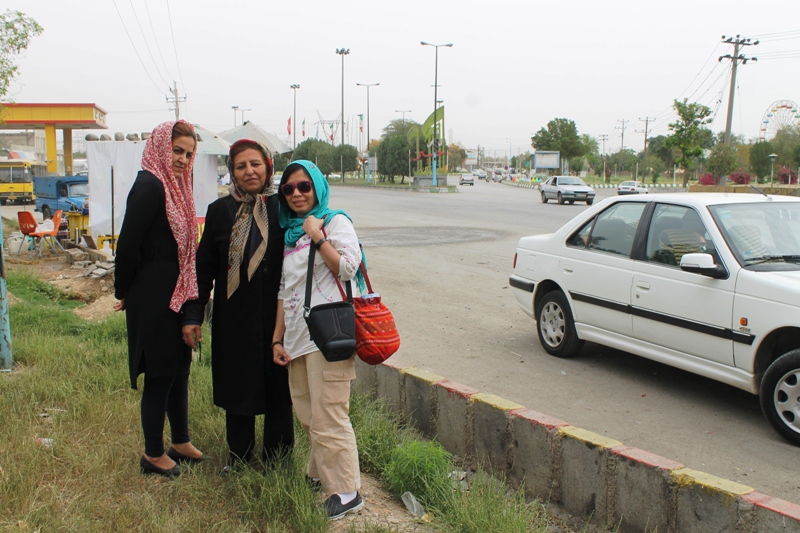
Susa/Shush
Susa is a city with a history of about 6000 years. It was one of the oldest cities in the world that has been inhabited until now. It had been a principal city of the Kingdoms of Elam and Achaemenid.
Elam Kingdom, the earliest kingdom in Iran’s history, made Susa its capital from 3750 B.C. If only the soils in Susa could speak, they would tell stories that could be written in thousand pages. The city had been up and down due to the political turmoil in Mesopotamia at the time. And it also beheld many bloodshed.
As the seat of the Elam Kingdom, King Hammurabi of Babylon (present day Iraq) attacked Susa in 1700s B.C. It was not until the 7th century B.C that Elam Kingdom ended when Assyria (present day northern Iraq and southeastern Turkey) entirely destroyed Susa. Susa had been completely exterminated. However, the Assyrians rebuilt Susa and the city was inhabited again. Later in the 6th century B.C, Cyrus the Great ambushed and seized the city, which marked the beginning of the powerful Achaemenid Empire.
Darius the Great, the third king of the Achaemenid Empire, reconstructed Susa and made it the principal city of the Empire. He also built a 1611-mile long royal road between Susa and Sardis (present day near Izmir, Turkey). The rule of the Achaemenid Empire stretched from Balkan to the Indus Valley.
Susa was flourishing during the reign of Darius the Great. It was actually his favorite city among other principal cities in the Empire like Pasargad, Persepolis and Ecbatana (present day Hamedan). Susa became the winter capital of the Achaemenid Empire and Darius the Great constructed his palace on 10,434-meter square land. The most famous part of the palace was Apadana, which was built on the ruins of Elam Palace. Apadana is a great hypostyle hall in the ancient Persian palaces. Susa reached its peak during the reign of the Achaemenid Empire.
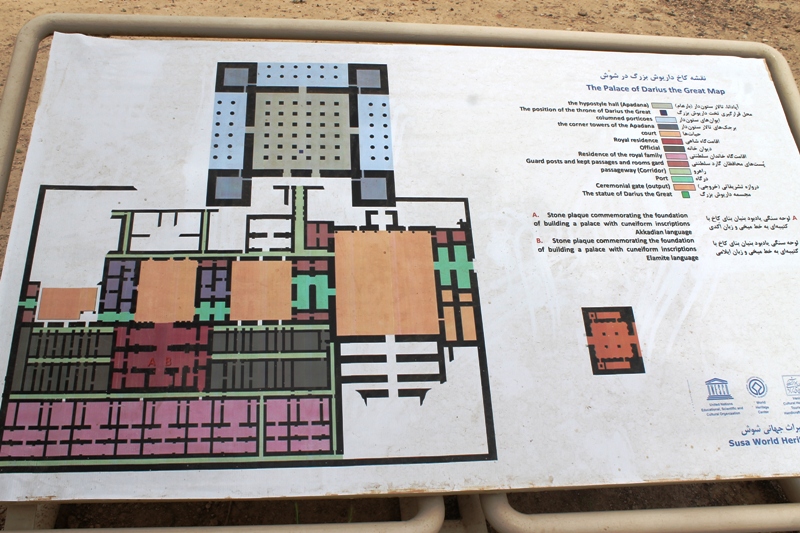
Two hundred years after Susa was reconstructed, the King of Macedonia, Alexander the Great, invaded the Achaemenid Empire. He ransacked Susa but didn’t destroy it. When Alexander conquered the Achaemenid Empire he married three local princesses. The first was Roxana. Later, he married two other princesses, Stateira II who was the daughter of Darius III and Parysatis, the youngest daughter of Artaxerxes III. He threw his wedding party with the two princesses on the same day with the weddings of his close companions. The mass wedding was held at the Palace in Susa.
When the Achaemenid Empire fell into the Seleucid Empire, Susa was no longer the imperial capital, but it was still an important trading city. The fate of Susa was not different from the succeeding empires that conquered the area. It was between ransacking and rebuilding the city. However, when the Mongols annexed many parts of Asian lands in the 13th century, Susa’s magnificence subsided.
The ancient Susa is no longer occupied. In July 2015, UNESCO included Susa as UNESCO Heritage.
Apadana and Archaeology Castle
We were entering the present day Susa. I could not believe I was in one of the ancient cities on earth again (a few years back I visited Damascus in Syria which is also an ancient city). I was so happy to be able to visit Susa, to imbibe its richness in the footprints of ancient civilizations.
The present day Susa was a quiet city in comparison to other cities that I had visited in Iran. There were no high rising buildings at least from what I witnessed. And I could sense its ancientry. As we arrived on midday, the city didn’t look busy,
The gigantic Archaeology Castle was obvious from far away. Ali’s father directed the car to the location. The complex of Archaeology Castle and Apadana Palace is situated in the shaded area. Finally we could find a spot of green spheres. I felt fresh air as we got out of the car.
Ali’s mother accompanied me on a tour of the complex of Apadana Palace and Archaeology Castle. The others were waiting for us by the side of the road under the shade. It was a good rest for Ali’s father who had driven a long way from Khorramabad.
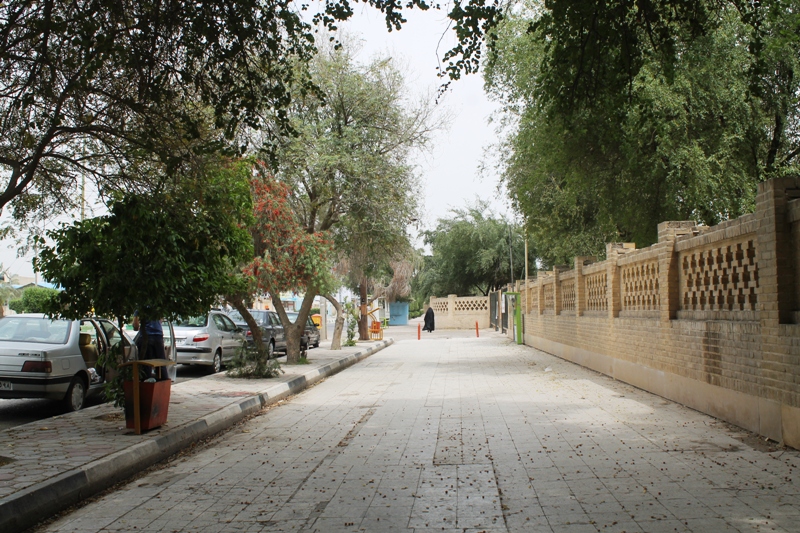
The complex is included in the UNESCO Heritage site. Like in other Iranian tourist destinations, the entrance ticket for foreigners at the time was 200,000 rial for one site. I decided to see Apadana Palace and the museum. One of the attendants in the ticket counter spoke fluent English.
By the entrance of the complex, there was a garden that was shaded with tall trees. Inside the garden, there was a small Susa Museum. We walked down following the direction to the Apadana Palace.
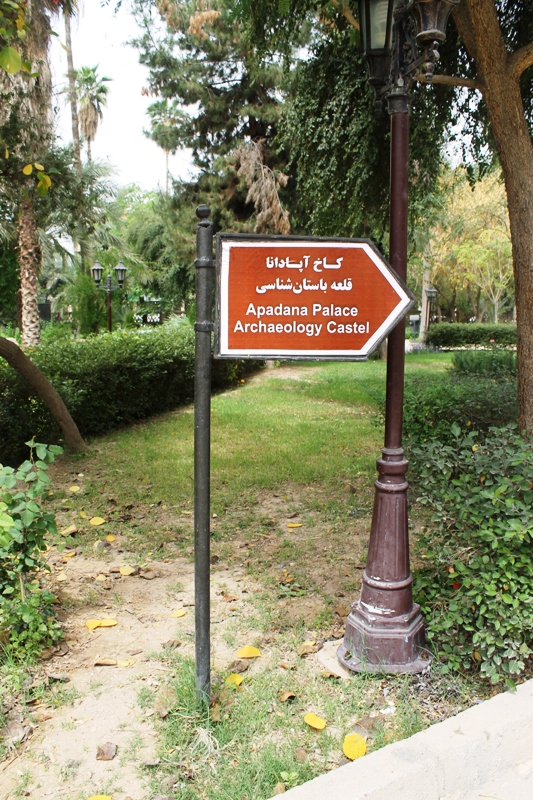
In comparison with Apadana Palace in Persepolis near Shiraz, the Apadana of Darius Palace in Susa was in complete ruins. There were some remains such as broken columns on the plain. On the site written both in Farsi and English, there was some information, though not much. The plain was a huge area to be explored. There should have been a lot of stories to be told from the site. I just imagined how majestic the Palace had been in the past where Darius the Great spent his time during the winter time or when Alexander the Great held a mass wedding between his Macedonian high ranking officers and Achaemenid princesses and noble women. Apadana in Susa is indeed an exciting site for a history lover.

I didn’t explore the whole area because the hot weather was unbearable for me. There were no trees on the ruins of the Apadana Palace. Nearby the ruins of the Palace was a gigantic Archaeology Castle.
The Susa Archaeology Castle was constructed during the time of the Qajar Dynasty in 1897 by a French archaeologist Jacques Jean Marie de Morgan. He came as the lead of an expedition team to do archaeological works in Susa. He and his team used the Castle as a base camp for excavation and exploration in the archaeological sites in Susa. The Castle was designed by France. It had medieval architecture. The Castle was constructed with materials from the bricks that were found in the excavations in Susa. It was built by local workers.
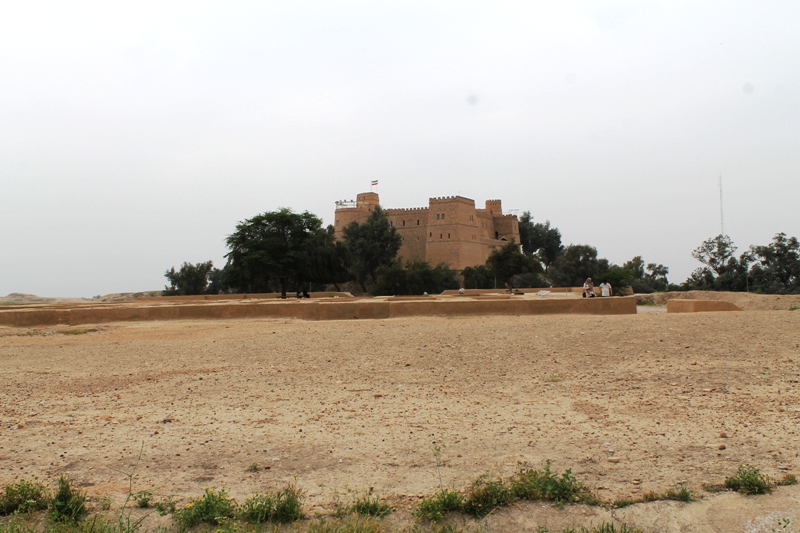
In 1890 Qajar Dynasty and France agreed that all gold and silver objects that were discovered from the Susa excavation would remain in Persia, while France could bring the artifacts and objects found during the excavation. Today, the Louvre Museum in France has many important objects and artifacts from Susa, while a small number of those objects are kept in the National Museum of Iran, Tehran.
Ali’s mother and I climbed to the ascending road to the Castle that had trapezoid form. It was built on the hill that was called Acropol. The Castle has Lower and Upper Courts. It has 76 rooms that were used for different purposes. The inner courtyard still kept some of the ruins from the excavations. Seeing how massive the Castle was I imagined that the French expedition must have come in a big group. Susa Archaeology Castle was a phenomenal castle for archaeological projects in the era of the Qajar Dynasty.
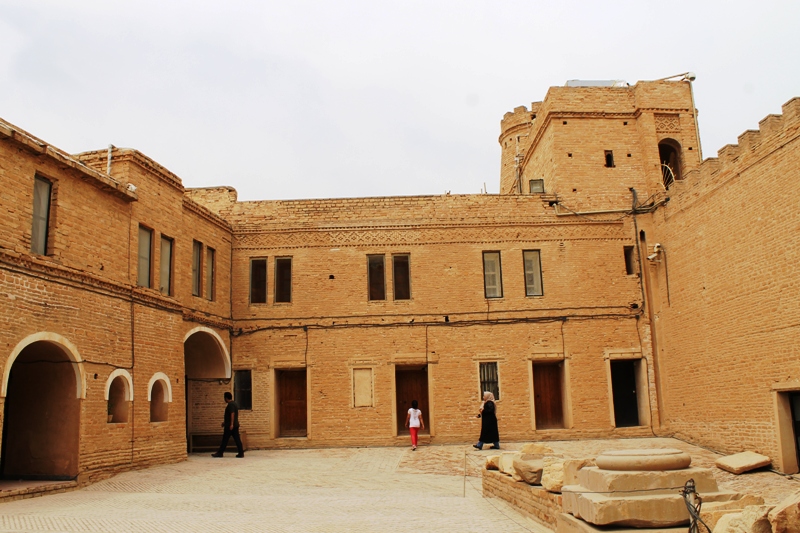
From the elevated Castle, I saw a tall, coned structure from a distance. “Nabi Daniel,” said Ali’s mother referring to the tomb of Prophet Daniel. From the point I stood, I could identify that the settlement area in Susa was not expansive. Before leaving the Complex, we stopped by at Susa Museum. The museum has a collection of objects excavated from Susa like weapons, ceramics, sculpture, and metal works. The objects in the Museum did reveal that great civilizations had settled in Susa.
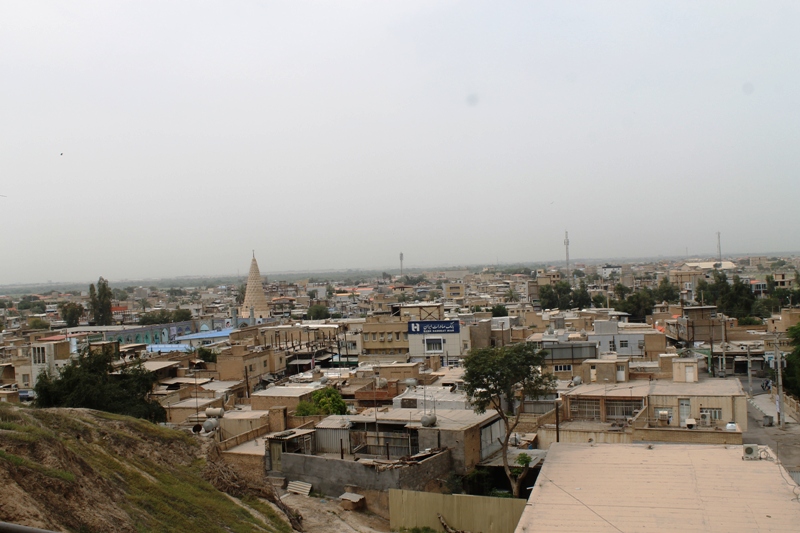
Prophet Daniel’s Tomb and Dezful River
After spending more than one hour in the Complex, we finished the tour of the Complex. By the car the family was ready to continue the trip. It was lunch time but before finding a place to eat, we would visit the tomb of Prophet Daniel first.
Several sites claimed to hold the tomb of Prophet Daniel, but Susa was widely accepted as the site of his tomb. Although the holy book of Muslims, Alquran, doesn’t specifically mention Prophet Daniel, the tomb is now a site of pilgrimage not only from the Muslims but also Jewish community.
When we arrived at the site of the tomb, some construction was being conducted on the entrance gate. Like in other pilgrimage sites in Iran, any woman has to wear chodar to enter the tomb. Usually the site provided the fabric for chodar. The three of us, Ali’s mother, Elham, and myself entered the ladies’ gate. There were quite a number of visitors to the tomb.
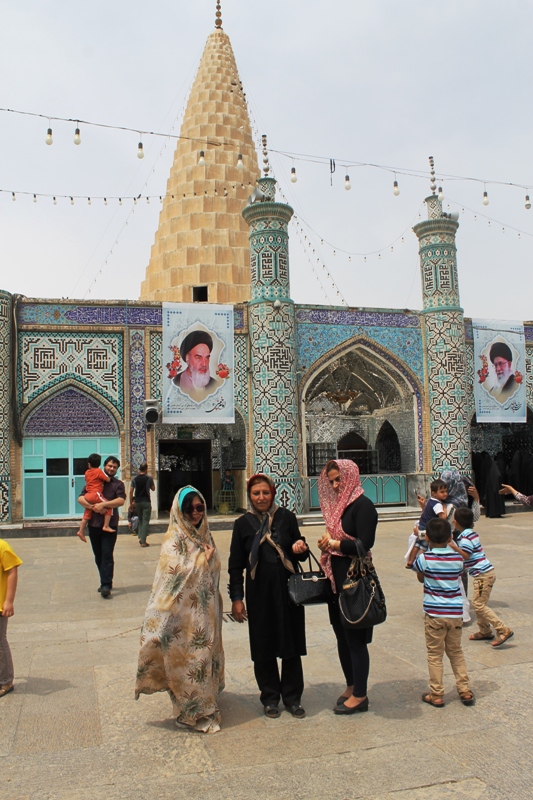
Inside the tomb, many women wore black chador. The grave of Prophet Daniel was situated in a room under the main dome that was plastered by mirrors. The grave was housed in a rectangular structure that was surrounded by a crafted silver layer, part of which has small holes to see the grave inside. On top of the rectangular structure was a trapezoid blue object plastered with yellow dark crafted decorations. The inscriptions on Arabic are written along the top of the rectangular structure. Not only the main dome, the vaults inside the tomb were plastered with mirrors. As such the whole interior of the tomb gave a glittering effect. Every visitor took her turn to say a prayer on the tomb, including me.
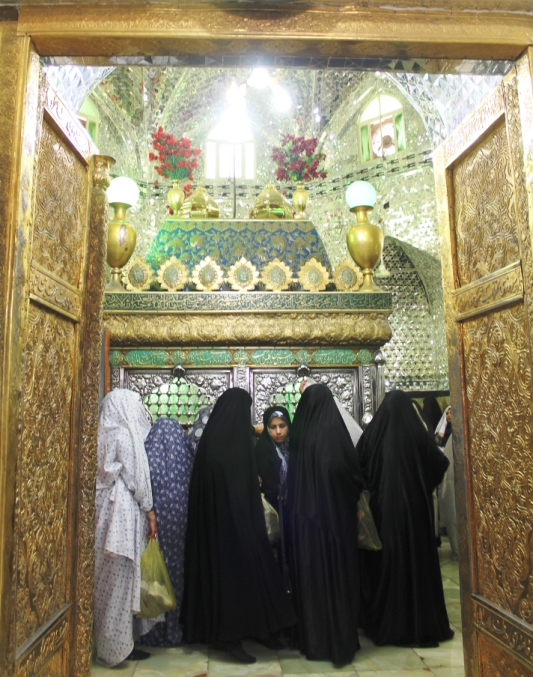
After all of us finished the prayer we went back to the car where Ali’s father was waiting. Everyone was hungry. We left the tomb of Prophet Daniel and drove to find restaurants. Ali’s mother wanted to buy chicken for us. We passed the main road and I was amazed to see that the roads were deserted. Most shops and businesses were closed. And I would have been lost in translation if I were there by myself since all shops and businesses along the road were written in Farsi.
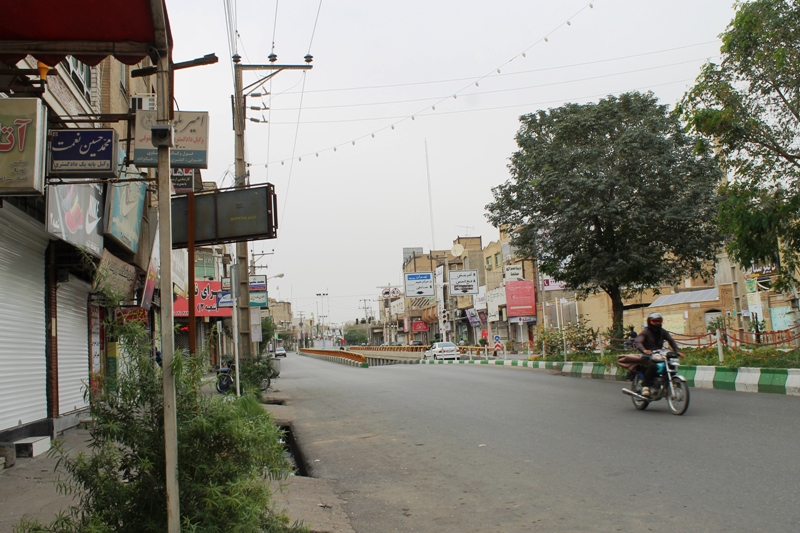
After we found a restaurant opened, Ali’s father parked the car by the side of the road. We got off and walked to the restaurant. The family looked for good chicken to be taken away. They asked the attendant where to find an available vegetable vendor. We drove further to the only vegetable and fruit vendor that was opened on that day.
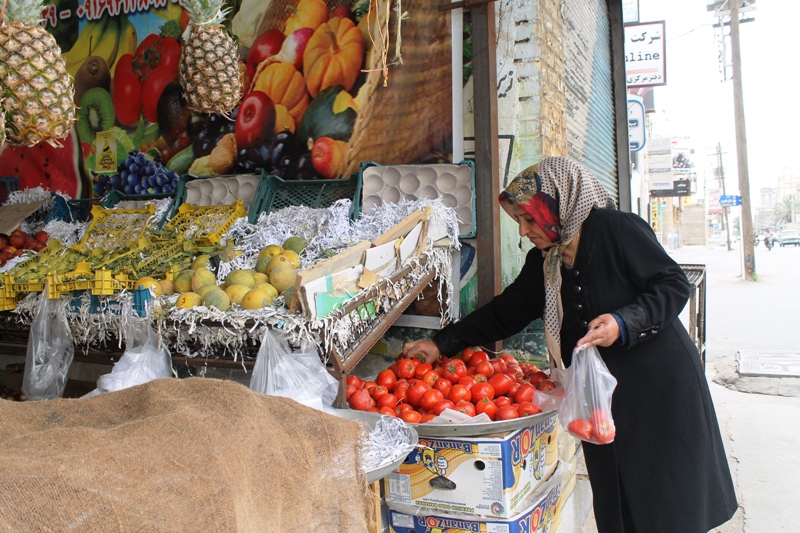
When the food was ready, we drove to the bank of the Dezful River. Dezful was famous for its Old Bridge dating back from the Sassanid Dynasty. We crossed over the new bridge over the Dezful River. I noticed the greenish water. By the river there were rows of platforms where people could spread their mat for picnic. We picked up a platform and started to prepare for lunch. It was again another picnic that I had with Ali’s family but this time it was in daylight.
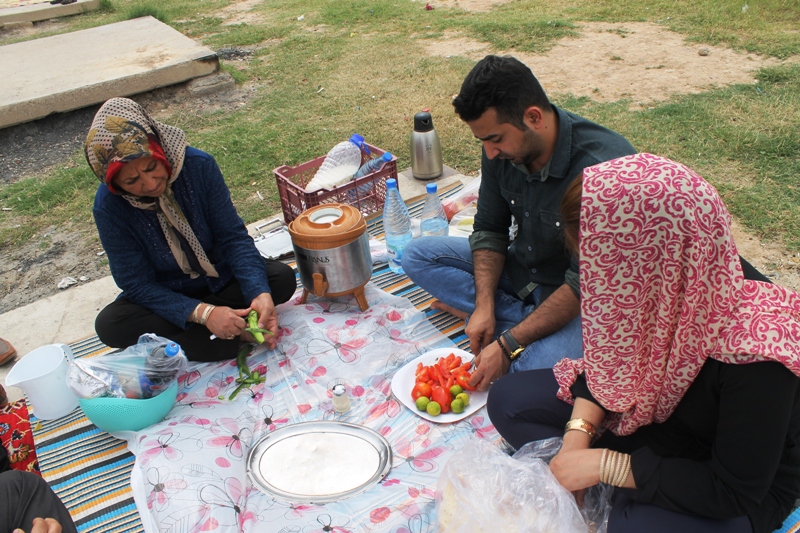
The river bank was quite crowded but not full with visitors who wanted to enjoy the river breeze. There were some small tents where the visitors camped. Some children were swimming or just playing by the river. The water spring of Dezful River comes from Zagros Mountain in the north. The water was clear and cold, too.
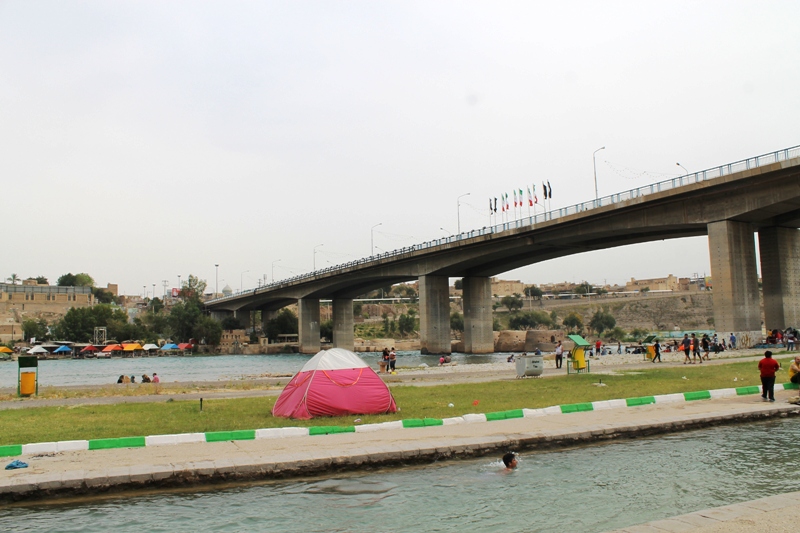
As I sat on the platform and across the river was the ancient city of Dezful. The Dezful River bank was really an oase for the local people to relax. The only thing that disheartened me were the plastic trashes that were spread on the green grass by the river.
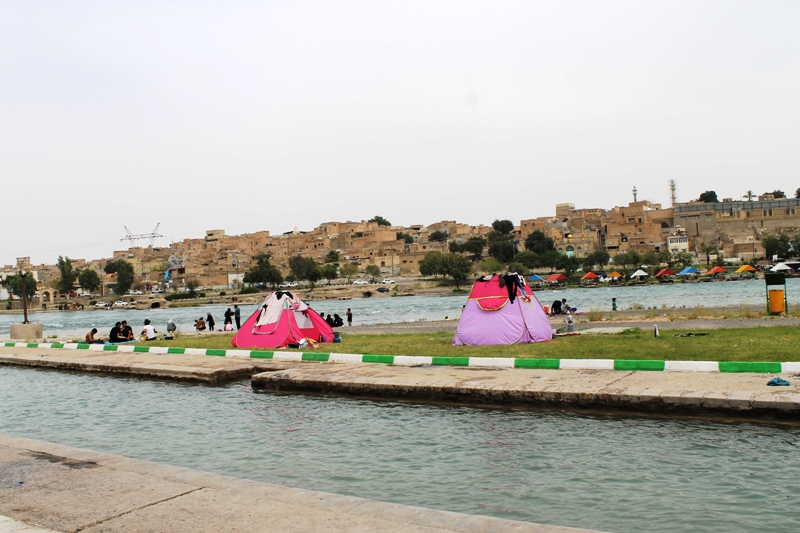
We rested there and after about one hour we left so that we would not be late arriving in Khorramabad. The whole day trip to Khuzestan Province was extraordinary, the significance of the places that I visited, the nature and of course the hospitality of Ali’s family were unbeatable.
To be continued

